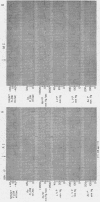Abstract
The effects on myocardial mechanics of acute, artificial aortic and mitral regurgitation were studied in the dog to determine the manner in which the changes in load induced by valvular regurgitation alter ventricular performance. With mitral and aortic regurgitant volumes of approximately the same magnitude as the forward stroke volume, immediate increases occurred in total stroke volume, left ventricular enddiastolic pressure, and peak ejection velocity, whereas contractility remained unchanged. Although calculated myocardial fiber tension rose, the rate of decline of tension during ejection was accelerated with regurgitation due to the more rapid decrease in ventricular size. Average tension therefore decreased relative to average pressure. As a consequence of the increased fiber length and this unloading, contractile element velocity, work, and power were increased. Despite unchanged contractility of the myocardium, the ejection fraction rose with both aortic and mitral regurgitation.
When regurgitant beats were compared with control beats at a constant end-diastolic volume, ventricular stroke volume, work, power, and ejection fraction, as well as contractile element velocity, work, and power consistently increased. Thus, reduction of instantaneous impedance to ejection allowed the ventricle to empty further, reducing ventricular wall tension with a resultant increase in the velocity of shortening. External energy output was increased despite unchanged contractility and diastolic fiber length. It is concluded that the impedance to ejection and myocardial fiber tension during ejection govern the velocity and extent of contractile element shortening, and hence affect stroke volume, peak aortic flow rate, and ejection fraction. The alterations of ventricular function accompanying valvular regurgitation can be explained by an evaluation of the effects of these lesions on the instantaneous impedance to left ventricular ejection.
Full text
PDF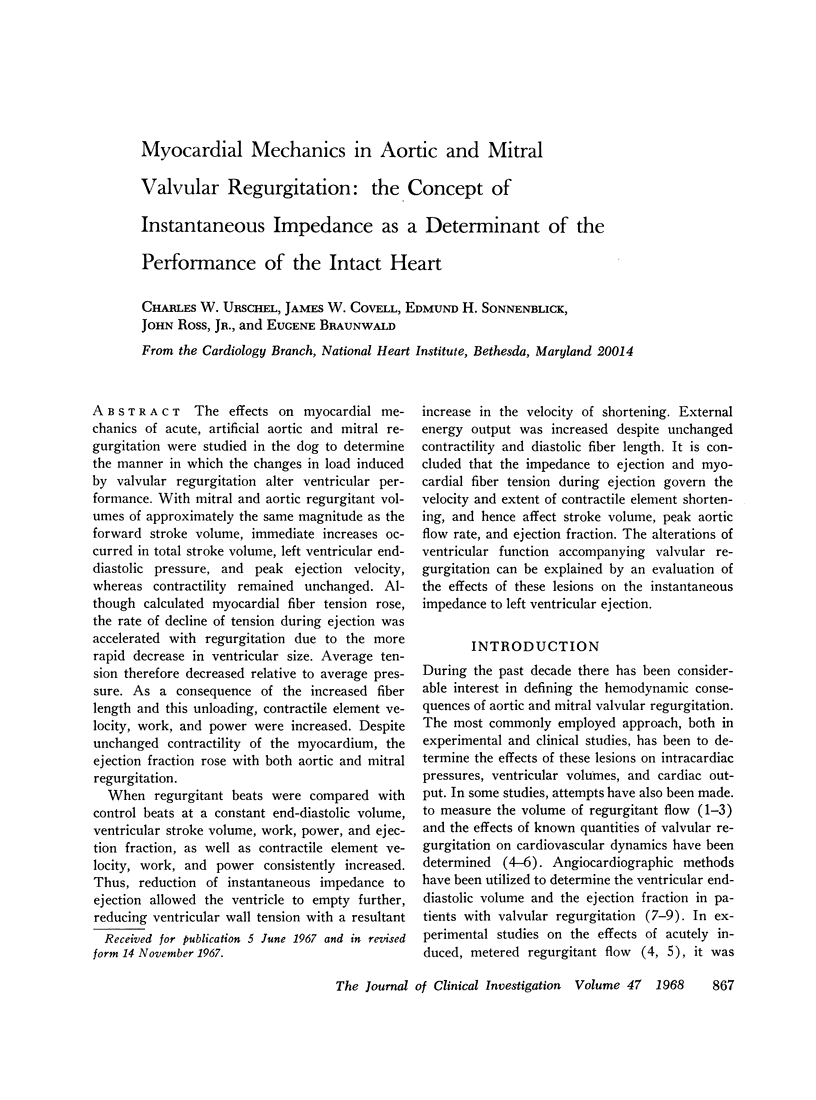
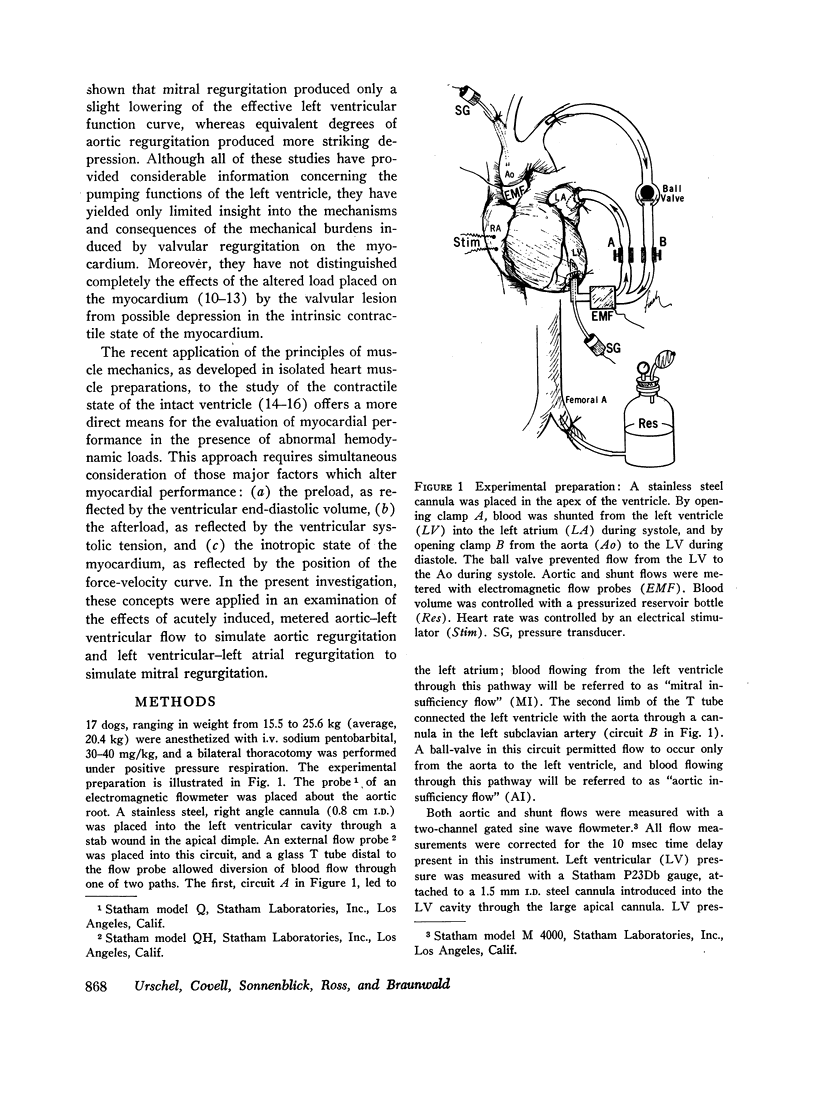
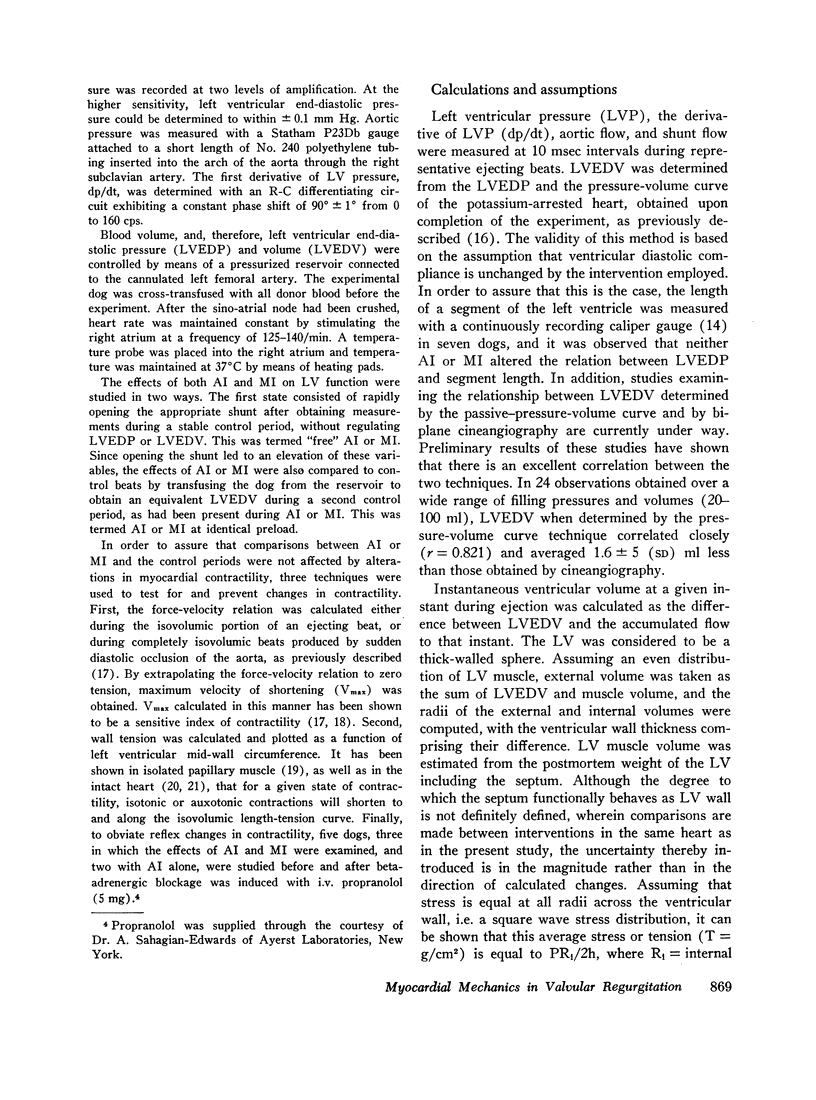

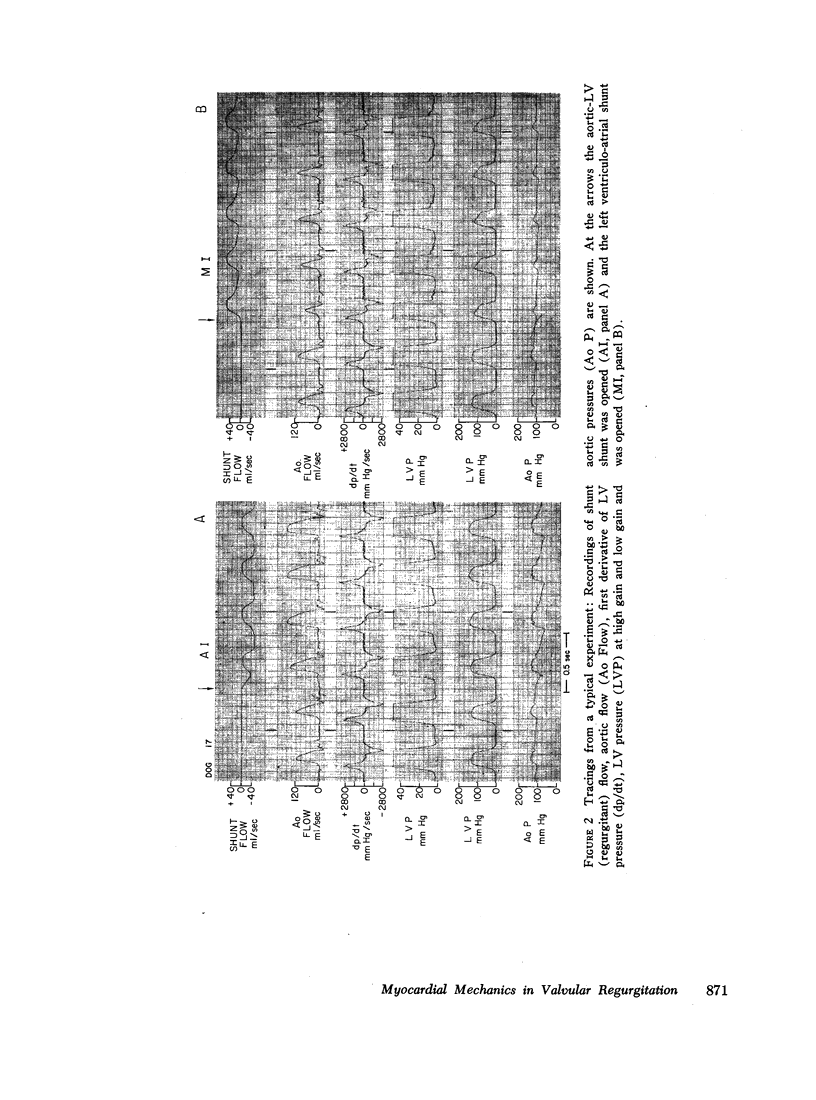
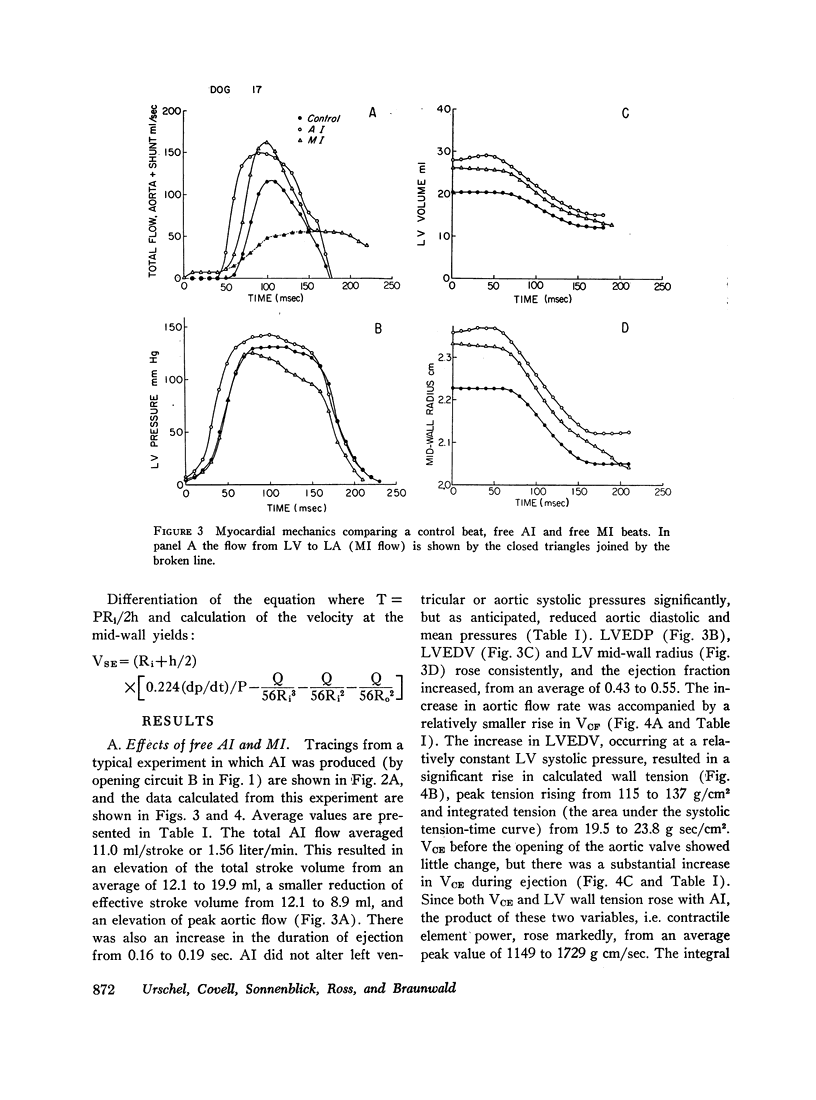
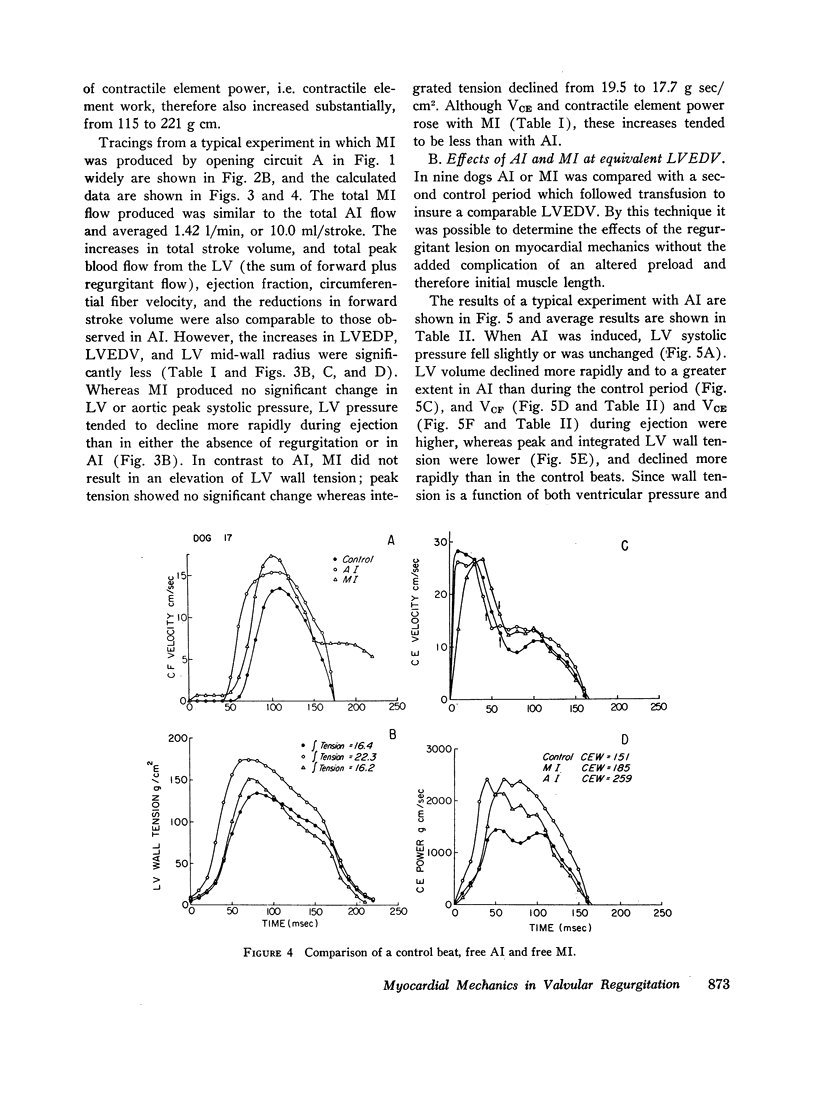
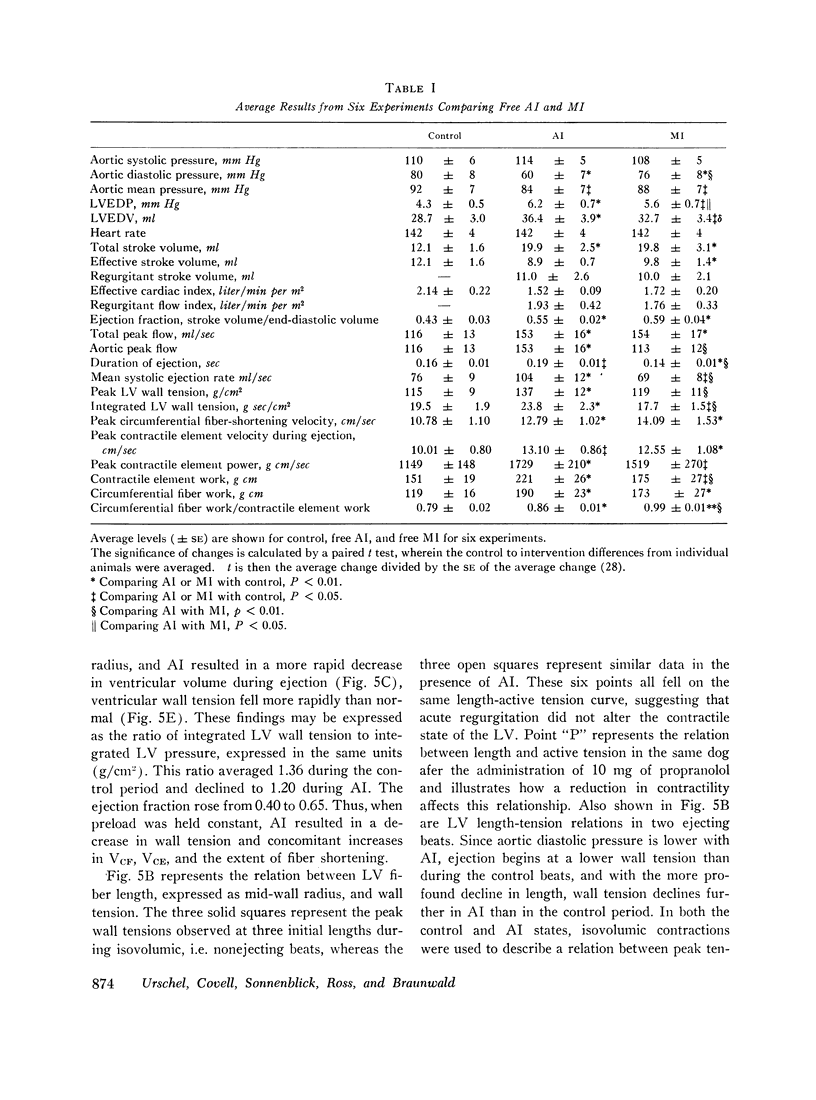
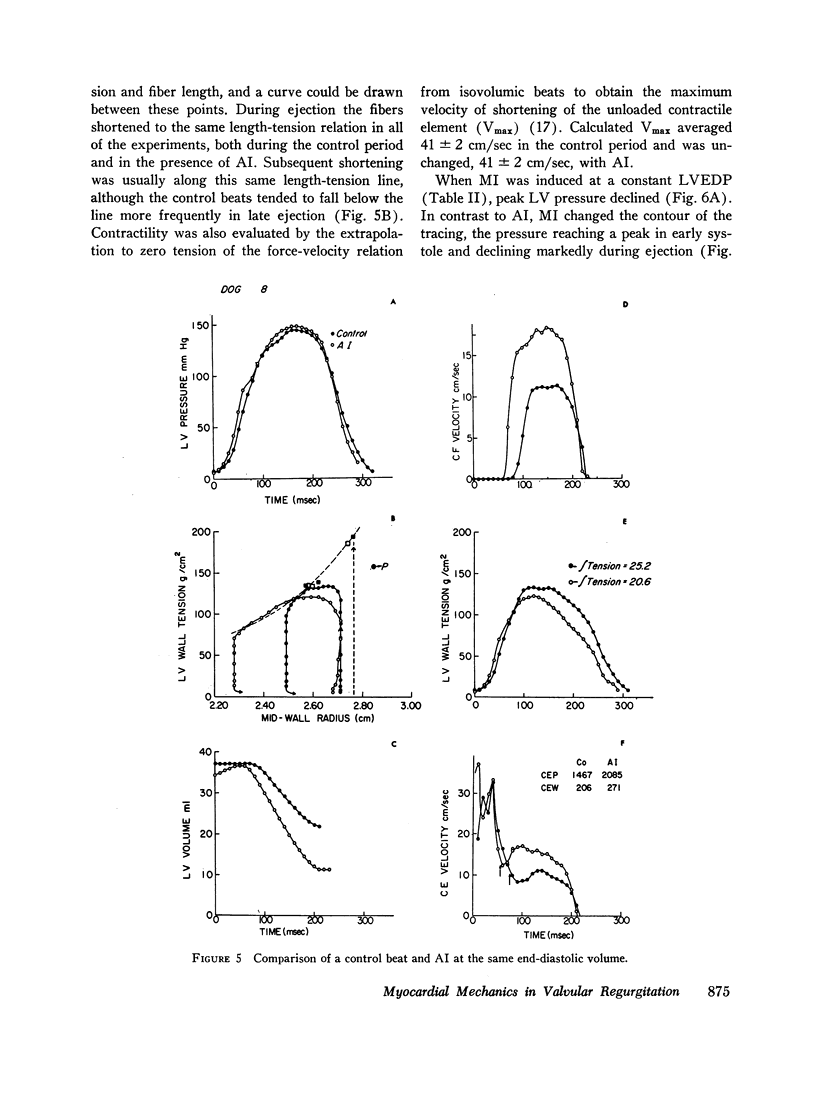
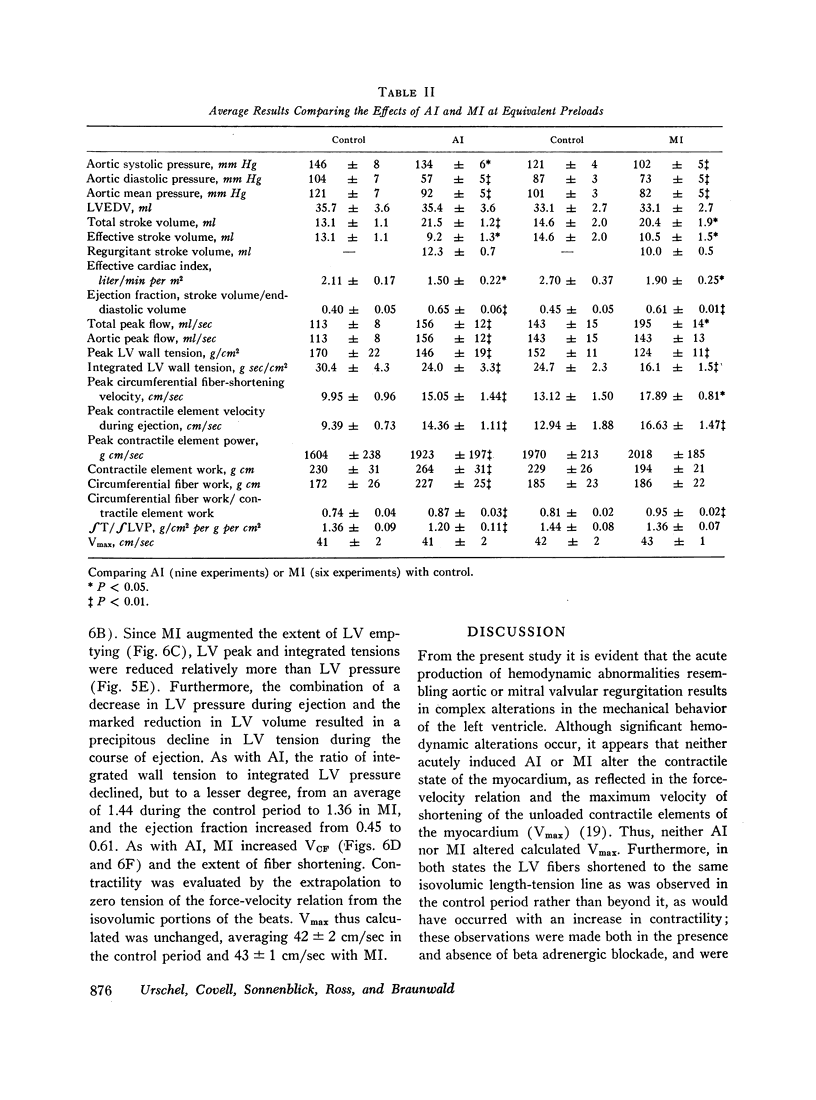
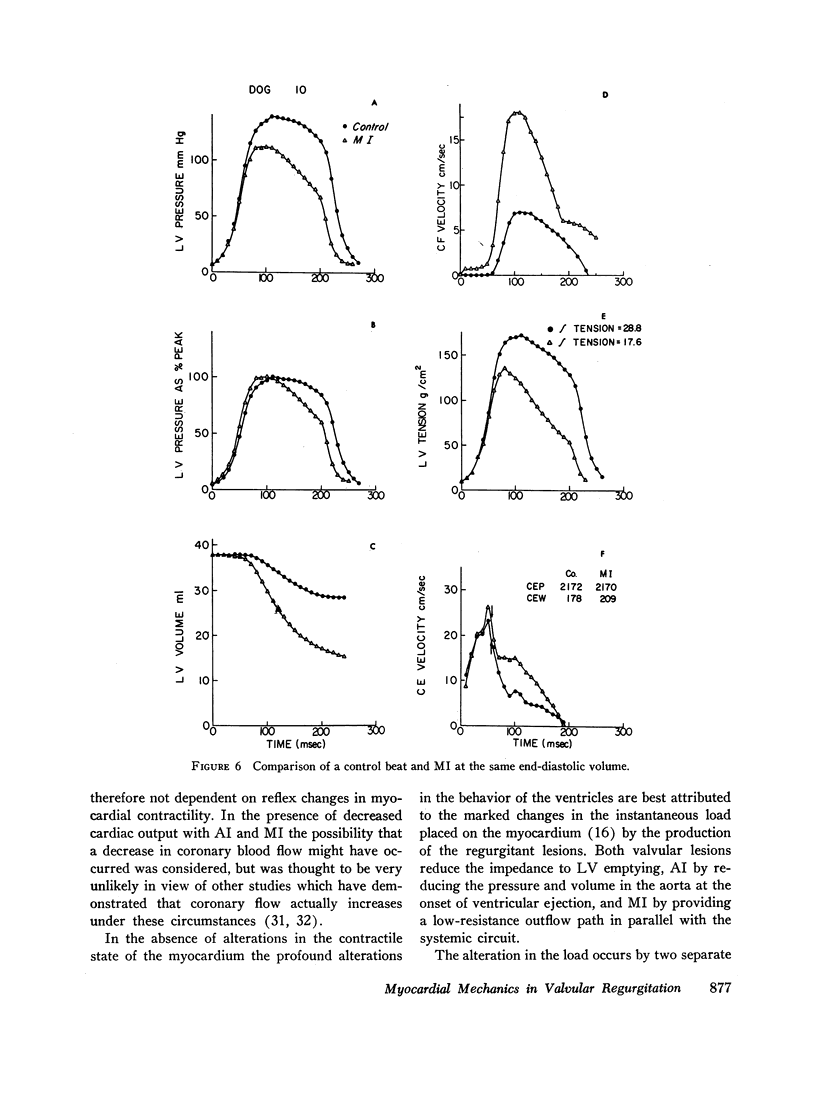
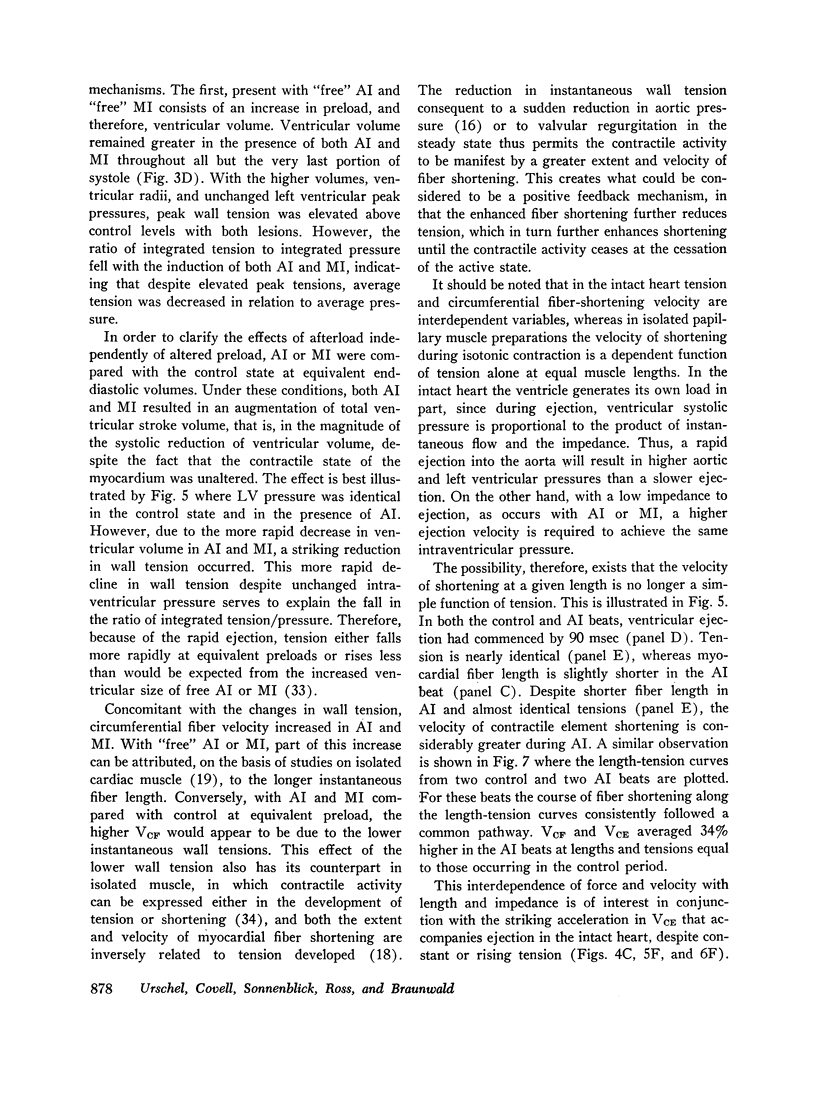
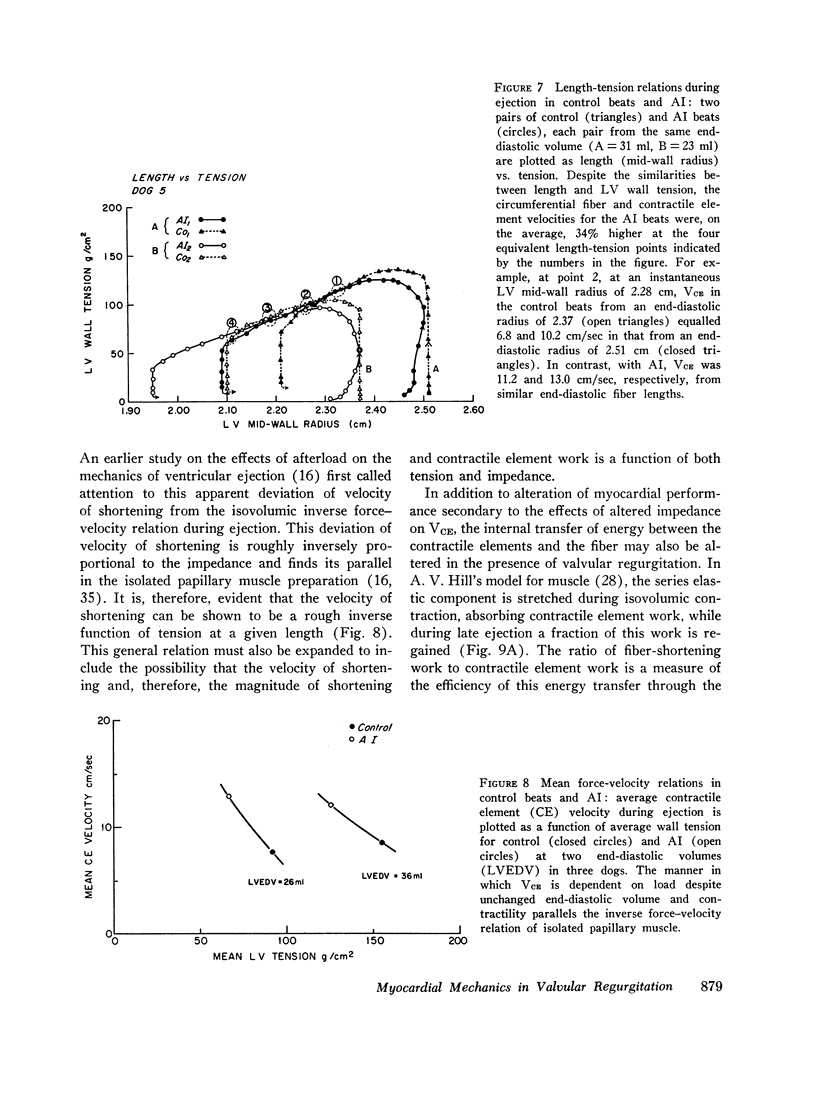
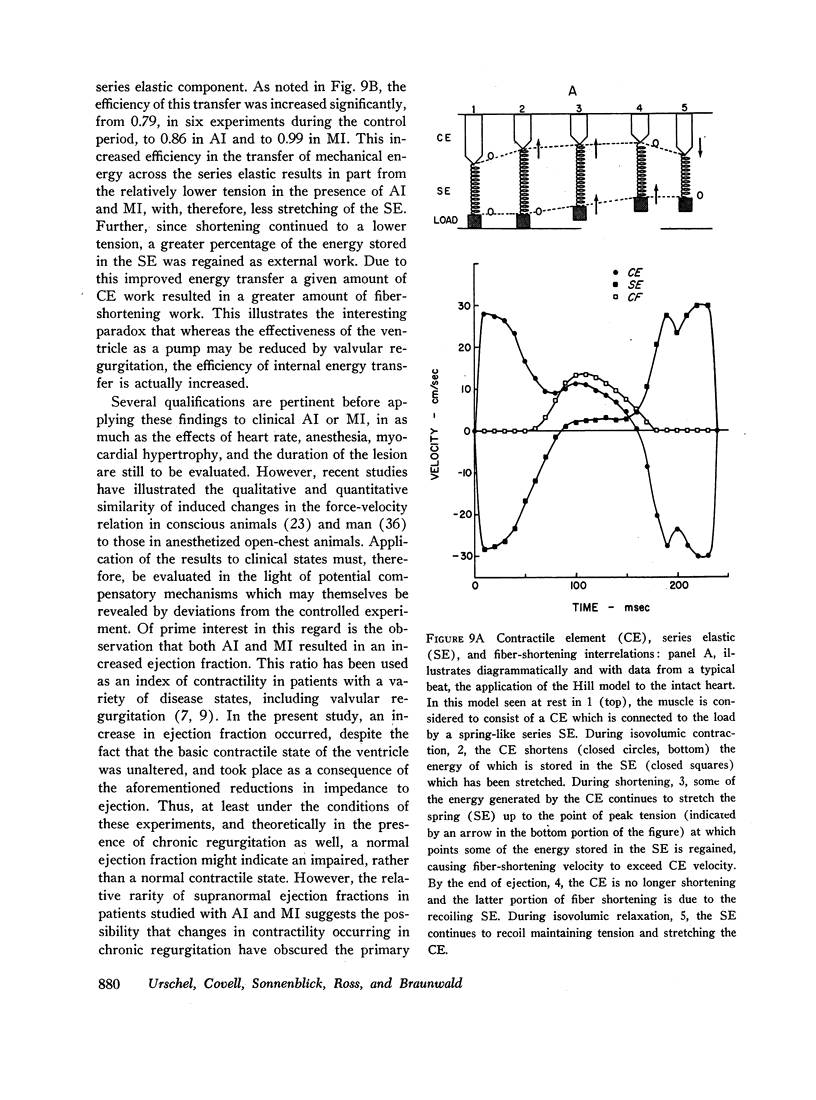
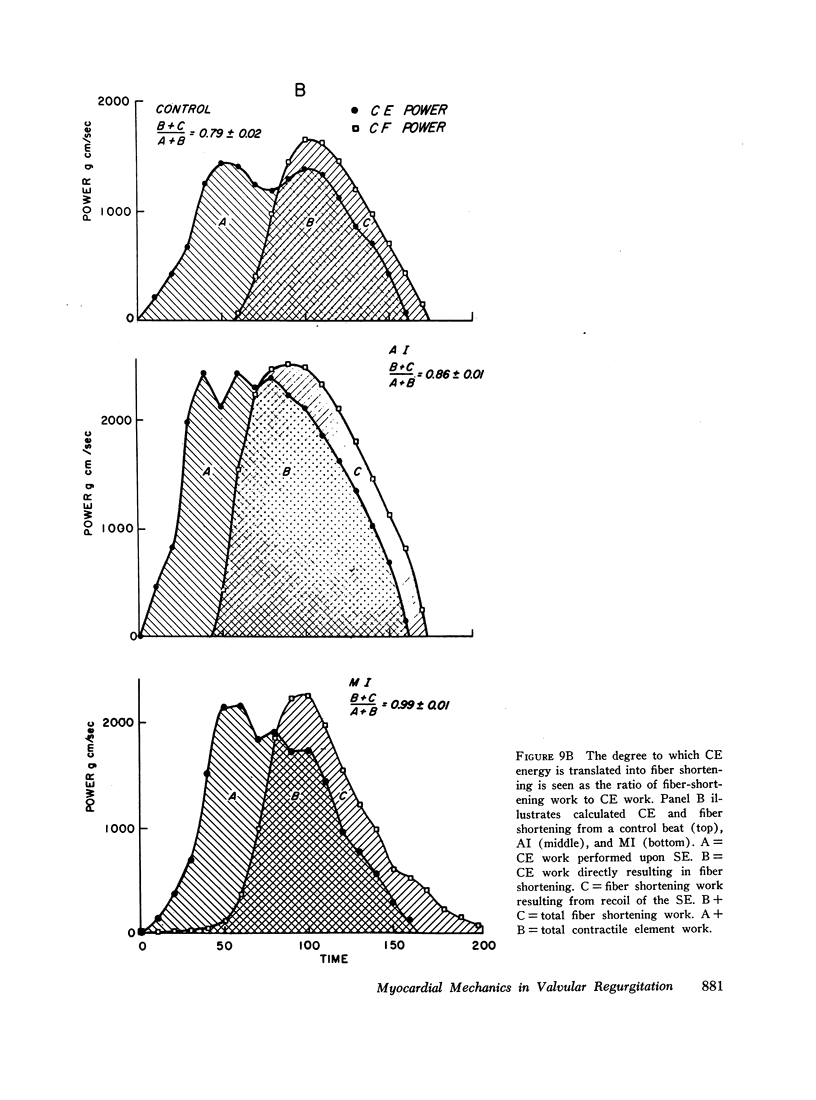
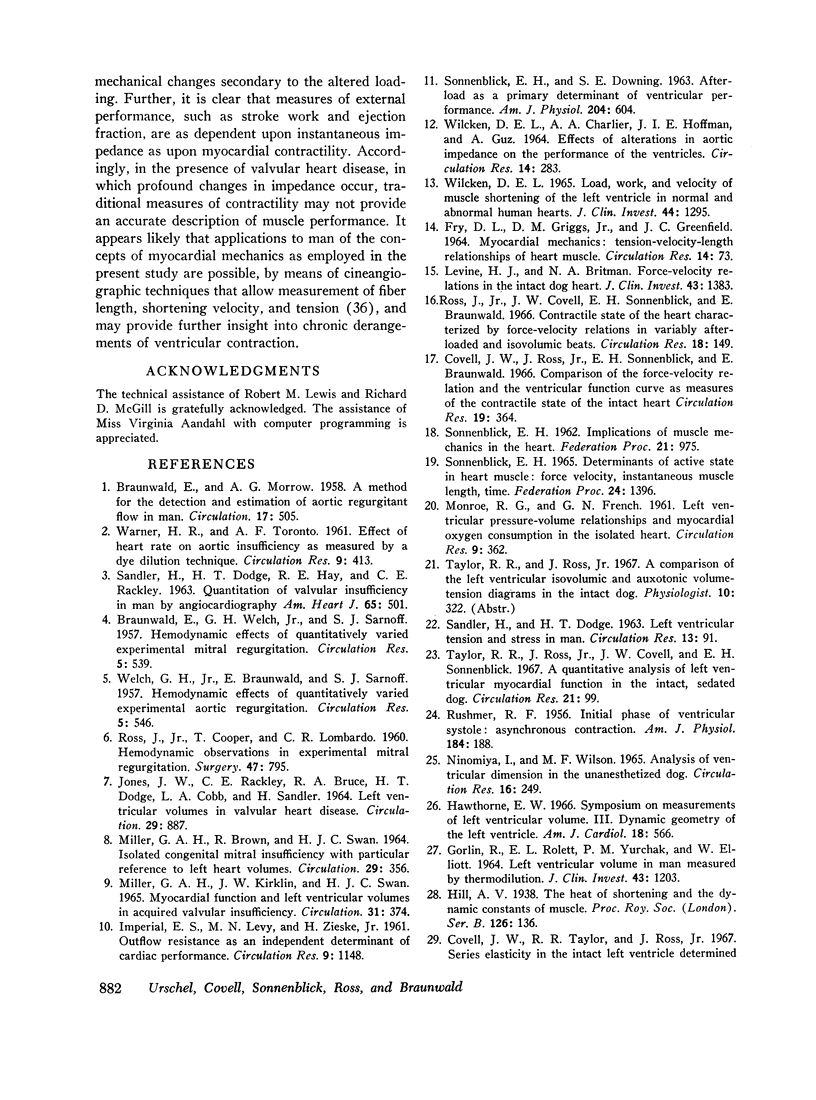

Images in this article
Selected References
These references are in PubMed. This may not be the complete list of references from this article.
- BRAUNWALD E., MORROW A. G. A method for the detection and estimation of aortic regurgitant flow in man. Circulation. 1958 Apr;17(4 Pt 1):505–511. doi: 10.1161/01.cir.17.4.505. [DOI] [PubMed] [Google Scholar]
- BRAUNWALD E., WELCH G. H., Jr, SARNOFF S. J. Hemodynamic effects of quantitatively varied experimental mitral regurgitation. Circ Res. 1957 Sep;5(5):539–545. doi: 10.1161/01.res.5.5.539. [DOI] [PubMed] [Google Scholar]
- Covell J. W., Ross J., Jr, Sonnenblick E. H., Braunwald E. Comparison of the force-velocity relation and the ventricular function curve as measures of the contractile state of the intact heart. Circ Res. 1966 Aug;19(2):364–372. doi: 10.1161/01.res.19.2.364. [DOI] [PubMed] [Google Scholar]
- DOWNING S. E., SONNENBLICK E. H. CARDIAC MUSCLE MECHANICS AND VENTRICULAR PERFORMANCE: FORCE AND TIME PARAMETERS. Am J Physiol. 1964 Sep;207:705–715. doi: 10.1152/ajplegacy.1964.207.3.705. [DOI] [PubMed] [Google Scholar]
- FRY D. L., GRIGGS D. M., Jr, GREENFIELD J. C., Jr MYOCARDIAL MECHANICS: TENSION-VELOCITY-LENGTH RELATIONSHIPS OF HEART MUSCLE. Circ Res. 1964 Jan;14:73–85. doi: 10.1161/01.res.14.1.73. [DOI] [PubMed] [Google Scholar]
- GORLIN R., ROLETT E. L., YURCHAK P. M., ELLIOTT W. C. LEFT VENTRICULAR VOLUME IN MAN MEASURED BY THERMODILUTION. J Clin Invest. 1964 Jun;43:1203–1221. doi: 10.1172/JCI105004. [DOI] [PMC free article] [PubMed] [Google Scholar]
- Hawthorne E. W. Symposium on measurements of left ventricular volume. 3. Dynamic geometry of the left ventricle. Am J Cardiol. 1966 Oct;18(4):566–573. doi: 10.1016/0002-9149(66)90012-9. [DOI] [PubMed] [Google Scholar]
- JONES J. W., RACKLEY C. E., BRUCE R. A., DODGE H. T., COBB L. A., SANDLER H. LEFT VENTRICULAR VOLUMES IN VALVULAR HEART DISEASE. Circulation. 1964 Jun;29:887–891. doi: 10.1161/01.cir.29.6.887. [DOI] [PubMed] [Google Scholar]
- MILLER G. A., BROWN R., SWAN H. J. ISOLATED CONGENITAL MITRAL INSUFFICIENCY WITH PARTICULAR REFERENCE TO LEFT HEART VOLUMES. Circulation. 1964 Mar;29:356–365. doi: 10.1161/01.cir.29.3.356. [DOI] [PubMed] [Google Scholar]
- MILLER G. A., KIRKLIN J. W., SWAN H. J. MYOCARDIAL FUNCTION AND LEFT VENTRICULAR VOLUMES IN ACQUIRED VALVULAR INSUFFICIENCY. Circulation. 1965 Mar;31:374–384. doi: 10.1161/01.cir.31.3.374. [DOI] [PubMed] [Google Scholar]
- MONROE R. G., FRENCH G. N. Left ventricular pressure-volume relationships and myocardial oxygen consumption in the isolated heart. Circ Res. 1961 Mar;9:362–374. doi: 10.1161/01.res.9.2.362. [DOI] [PubMed] [Google Scholar]
- NINOMIYA I., WILSON M. F. ANALYSIS OF VENTRICULAR DIMENSION IN THE UNANESTHETIZED DOG. Circ Res. 1965 Mar;16:249–260. doi: 10.1161/01.res.16.3.249. [DOI] [PubMed] [Google Scholar]
- Parmley W. W., Sonnenblick E. H. Series elasticity in heart muscle. Its relation to contractile element velocity and proposed muscle models. Circ Res. 1967 Jan;20(1):112–123. doi: 10.1161/01.res.20.1.112. [DOI] [PubMed] [Google Scholar]
- ROSS J., Jr, COOPER T., LOMBARDO C. R. Hemodynamic observations in experimental mitral regurgitation. Surgery. 1960 May;47:795–803. [PubMed] [Google Scholar]
- RUSHMER R. F. Initial phase of ventricular systole: asynchronous contraction. Am J Physiol. 1956 Jan;184(1):188–194. doi: 10.1152/ajplegacy.1955.184.1.188. [DOI] [PubMed] [Google Scholar]
- SANDLER H., DODGE H. T., HAY R. E., RACKLEY C. E. Quantitation of valvular insufficiency in man by angiocardiography. Am Heart J. 1963 Apr;65:501–513. doi: 10.1016/0002-8703(63)90100-5. [DOI] [PubMed] [Google Scholar]
- SANDLER H., DODGE H. T. LEFT VENTRICULAR TENSION AND STRESS IN MAN. Circ Res. 1963 Aug;13:91–104. doi: 10.1161/01.res.13.2.91. [DOI] [PubMed] [Google Scholar]
- SONNENBLICK E. H., DOWNING S. E. Afterload as a primary determinat of ventricular performance. Am J Physiol. 1963 Apr;204:604–610. doi: 10.1152/ajplegacy.1963.204.4.604. [DOI] [PubMed] [Google Scholar]
- SONNENBLICK E. H. Implications of muscle mechanics in the heart. Fed Proc. 1962 Nov-Dec;21:975–990. [PubMed] [Google Scholar]
- SONNENBLICK E. H. SERIES ELASTIC AND CONTRACTILE ELEMENTS IN HEART MUSCLE: CHANGES IN MUSCLE LENGTH. Am J Physiol. 1964 Dec;207:1330–1338. doi: 10.1152/ajplegacy.1964.207.6.1330. [DOI] [PubMed] [Google Scholar]
- Sonnenblick E. H. Determinants of active state in heart muscle: force, velocity, instantaneous muscle length, time. Fed Proc. 1965 Nov-Dec;24(6):1396–1409. [PubMed] [Google Scholar]
- Taylor R. R., Ross J., Jr, Covell J. W., Sonnenblick E. H. A quantitative analysis of left ventricular myocardial function in the intact, sedated dog. Circ Res. 1967 Jul;21(1):99–115. doi: 10.1161/01.res.21.1.99. [DOI] [PubMed] [Google Scholar]
- WARNER H. R., TORONTO A. F. Effect of heart rate on aortic insufficiency as measured by a dye-dilution technique. Circ Res. 1961 Mar;9:413–417. doi: 10.1161/01.res.9.2.413. [DOI] [PubMed] [Google Scholar]
- WEGRIA R., MUELHEIMS G., GOLUB J. R., JREISSATY R., NAKANO J. Effect of aortic insufficiency on arterial blood pressure, coronary blood flow and cardiac oxygen consumption. J Clin Invest. 1958 Mar;37(3):471–475. doi: 10.1172/JCI103627. [DOI] [PMC free article] [PubMed] [Google Scholar]
- WEGRIA R., MUELHEIMS G., JREISSATY R., NAKANO J. Effect of acute mitral insufficiency of various degrees on mean arterial blood pressure, coronary blood flow cardiac output and oxygen consumption. Circ Res. 1958 May;6(3):301–306. doi: 10.1161/01.res.6.3.301. [DOI] [PubMed] [Google Scholar]
- WELCH G. H., Jr, BRAUNWALD E., SARNOFF S. J. Hemodynamic effects of quantitatively varied experimental aortic regurgitation. Circ Res. 1957 Sep;5(5):546–551. doi: 10.1161/01.res.5.5.546. [DOI] [PubMed] [Google Scholar]
- WILCKEN D. E., CHARLIER A. A., HOFFMAN J. I., GUZ A. EFFECTS OF ALTERATIONS IN AORTIC IMPEDANCE ON THE PERFORMANCE OF THE VENTRICLES. Circ Res. 1964 Apr;14:283–293. doi: 10.1161/01.res.14.4.283. [DOI] [PubMed] [Google Scholar]
- WILCKEN D. E. LOAD, WORK, AND VELOCITY OF MUSCLE SHORTENING OF THE LEFT VENTRICLE IN NORMAL AND ABNORMAL HUMAN HEARTS. J Clin Invest. 1965 Aug;44:1295–1310. doi: 10.1172/JCI105236. [DOI] [PMC free article] [PubMed] [Google Scholar]



